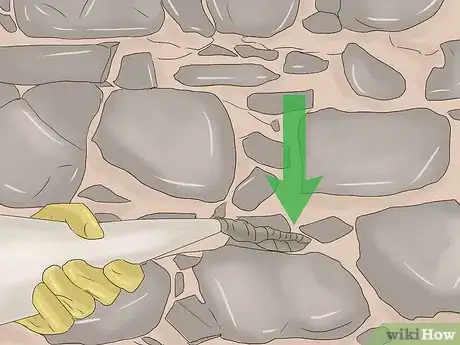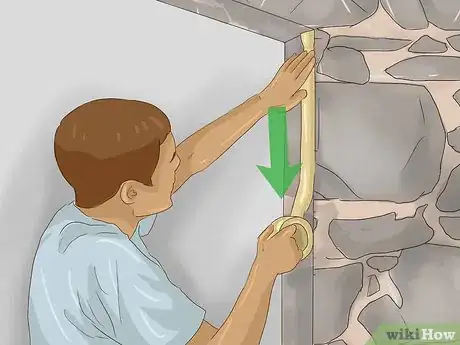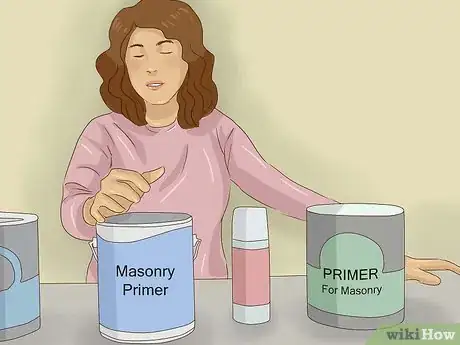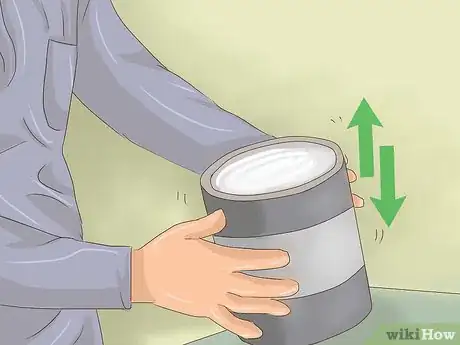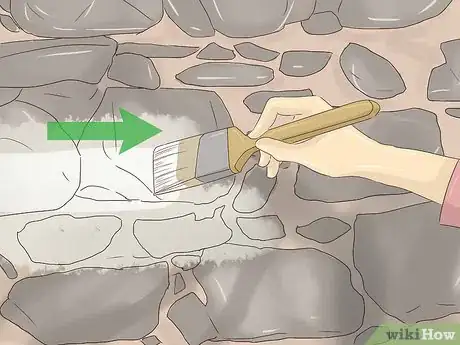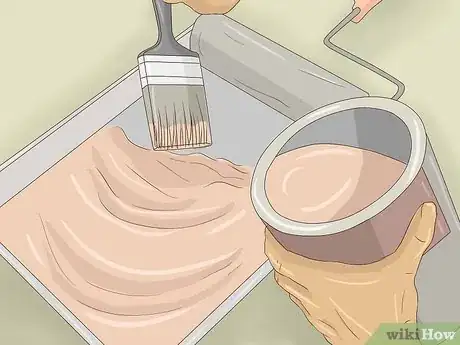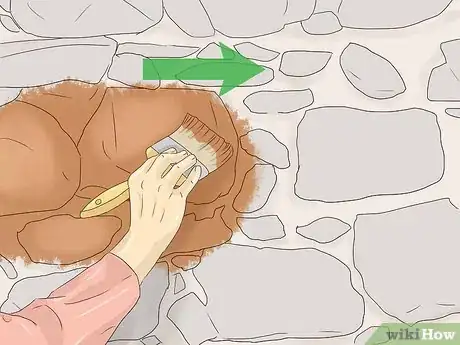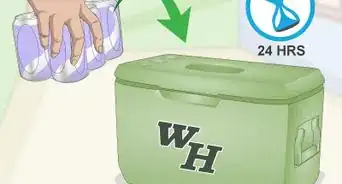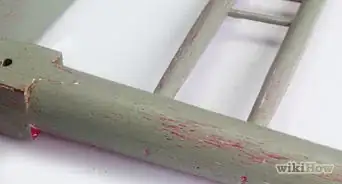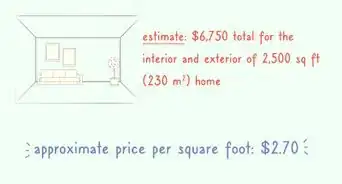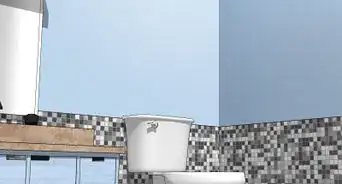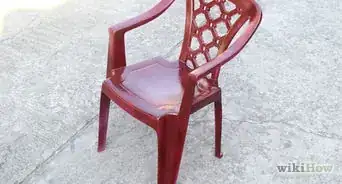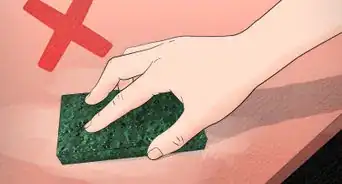This article was co-authored by Laura M. Johnson. Laura M. Johnson is a Mural Artist and the Owner of Laura Margo Murals & Custom Art in St. Paul, Minnesota. She has over five years of experience in the industry and has worked professionally across venture capital, communications, the arts, and beyond. She helps empower small and growing businesses to find their voices, share their stories, and grow their impact. Laura received her Master of Business Administration from the University of Minnesota - Carlson School of Management, and her Bachelors in Journalism and Communication Studies with a minor in Fine Arts from the University of Oregon.
This article has been viewed 56,483 times.
Stone basements are predominantly found in older homes. Stone typically was used in basements because it was readily available and less expensive than concrete. While stone basement walls provide a rustic charm, they may need painting to enhance the appearance of your basement or provide a barrier of protection from moisture damage. Because stones are porous, moisture can build up in the stones, which can result in mold infestations and structural damage. Use these tips to paint a stone basement.
Steps
Prepare the Stone Basement for Painting
-
1Repair stone walls. Fill in all holes and cracks with a concrete repair product like hydraulic cement, which is available at home improvement centers. Follow the manufacturer's instructions for application.
-
2Remove stains caused by mold and mildew.
- Apply a solution of 2 tbsp. (14.8 ml) of bleach and 1 quart (0.95 liters) of warm water. Blot the affected area with a sponge or cloth saturated with the solution. Continue blotting until the stain disappears.
- Remove stains with a commercial grade mold and mildew remover. Commercial mold and mildew cleaners are available at most home improvement centers.
Advertisement -
3Clean the stone walls. Remove dust, dirt and oil from the stone basement walls prior to painting.
- Remove loose dirt and debris with a coarse brush. Clean the walls by wiping them down with a damp cloth.
- Use a commercial degreasing product to remove stubborn grease or oil stains. Commercial grade degreasing solutions are available at most home improvement stores. Follow the manufacturer's directions for application.
- Utilize a pressure washer to remove dirt and debris. Pressure washers are available for rent at most home improvement stores. Exhibit caution when using a pressure washer to clean stone walls. To avoid damage to the stone basement, use the pressure washer on the lowest pressure setting and gradually increase the pressure.
-
4Protect any areas you do not want painted. Move all furniture to the center of the basement so the painting areas are clear of any obstacles. Cover any areas of the walls you do not want painted, such as baseboards or doorways, with painter's tape.
- Let the stone dry entirely before you start priming. Typically, it will take at least 24 hours for the stone to dry.
Prime the Stone Basement Walls
-
1Select a primer created specifically for masonry. Masonry primers will adhere to the stone walls better and provide more durability than general primers. Masonry primers also protect the stone from water damage. Primer is mandatory, so don’t skip this!
-
2Mix the masonry primer. With the lid on, vigorously shake the primer container to mix the contents.
-
3Pour the masonry primer into a bucket or paint tray.
-
4Apply the primer to the stone walls. Follow the instructions for your specific masonry primer. If no directions were supplied, follow these general guidelines for applying masonry primer to stone walls.
- Use a wide nylon/polyester brush to apply the primer. The brush should be between 2 and 3 inches (5 and 7.6 cm). Avoid rollers when painting stone basement walls because the roller won't get the paint into the small uneven surfaces of the stone. The rugged stone surface also could tear a roller cover.
- Cut in a 2- to 3-inch (5- to 7.6-cm) border around the top, bottom and sides of the stone walls. Start by applying masonry primer in 1 corner and continue along the edge of the wall.
- Paint the masonry primer onto the stone walls in 4-foot by 2-foot (1.2-m by .6-m) sections. As you apply the primer, overlap into the previously applied and cut in areas for consistent coverage.
-
5Allow the primer to dry. For best results, let the masonry primer dry for a minimum of 8 hours.
Paint the Stone Basement Walls
-
1Choose a wall paint. Select a water-resistant masonry paint made specifically for porous surfaces. A water-resistant paint will provide a moisture barrier for your stone basement, and the alkali resistant coating will offer increased durability.
- Select a paint color that complements your basement's decor. Masonry paint is available in several colors at home improvement and paint stores.
-
2Mix the masonry paint. With the lid on, vigorously shake the paint container to mix the contents.
-
3Pour the masonry paint into a paint tray.
-
4Apply the paint. For best coverage and moisture protection, apply 2 to 3 coats of masonry paint to stone walls.
- Use a wide nylon/polyester brush to apply the masonry paint. The brush should be between 2 and 3 inches (5 and 7.6 cm). Avoid rollers when painting stone basement walls because the roller won't provide coverage in the uneven surfaces of the stone. The rugged stone surface also could damage a roller cover.
- Cut in a 2- to 3-inch (5- to 7.6-cm) border around the top, bottom and sides of the stone walls. Start by applying masonry paint in 1 corner and continue along the edge of the wall.
- Paint the masonry paint onto the stone walls in 4-foot by 2-foot (1.2-m by .6-m) sections. As you apply the paint, overlap into the previously applied and cut in areas for consistent coverage.
- Allow the paint to dry for a minimum of 4 hours in between coats of paint.
- Evaluate the coverage after the second coat of paint. Check the small crevices in the stones to ensure even coverage. The walls may need a third coat of paint, or spot applications in the stone wall's nooks and crannies may be necessary.
-
5Allow the paint to dry completely.
Community Q&A
-
QuestionHow can old basement stone be covered?
 Community AnswerIf you mean a basement made of stone, then typical wall paint will do. If you mean a stone that's been in your basement for a while I imagine standard wall paint would still do. Just be sure to put a priming layer on for a more even application.
Community AnswerIf you mean a basement made of stone, then typical wall paint will do. If you mean a stone that's been in your basement for a while I imagine standard wall paint would still do. Just be sure to put a priming layer on for a more even application.
Warnings
- Paint products can be harmful if swallowed. Keep all paint out of reach of children and pets.⧼thumbs_response⧽
- Paint fumes can be toxic, especially for pregnant women or young children. Keep children, pets and pregnant women out of your basement while painting.⧼thumbs_response⧽
Things You'll Need
- Painter's tape
- Hydraulic cement
- Bleach
- Water
- Towel, rag or sponge
- Commercial grade mold and mildew stain remover
- Commercial degreasing product
- Coarse brush
- Pressure washer
- Masonry primer
- Masonry paint
- Paint tray
- Polyester/nylon paintbrushes
